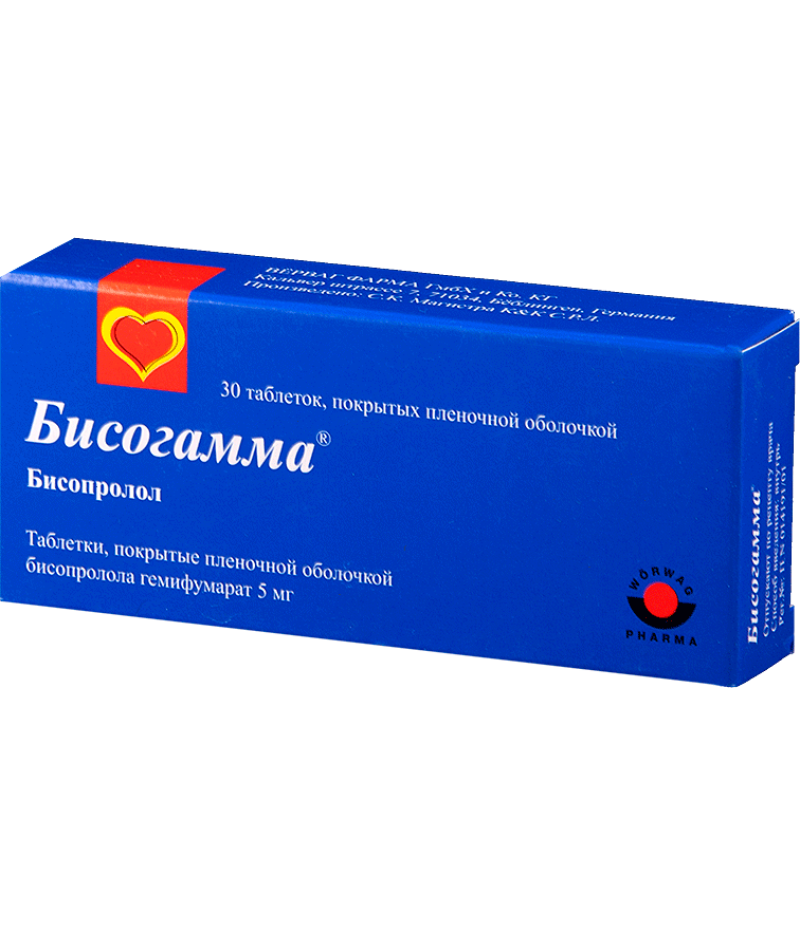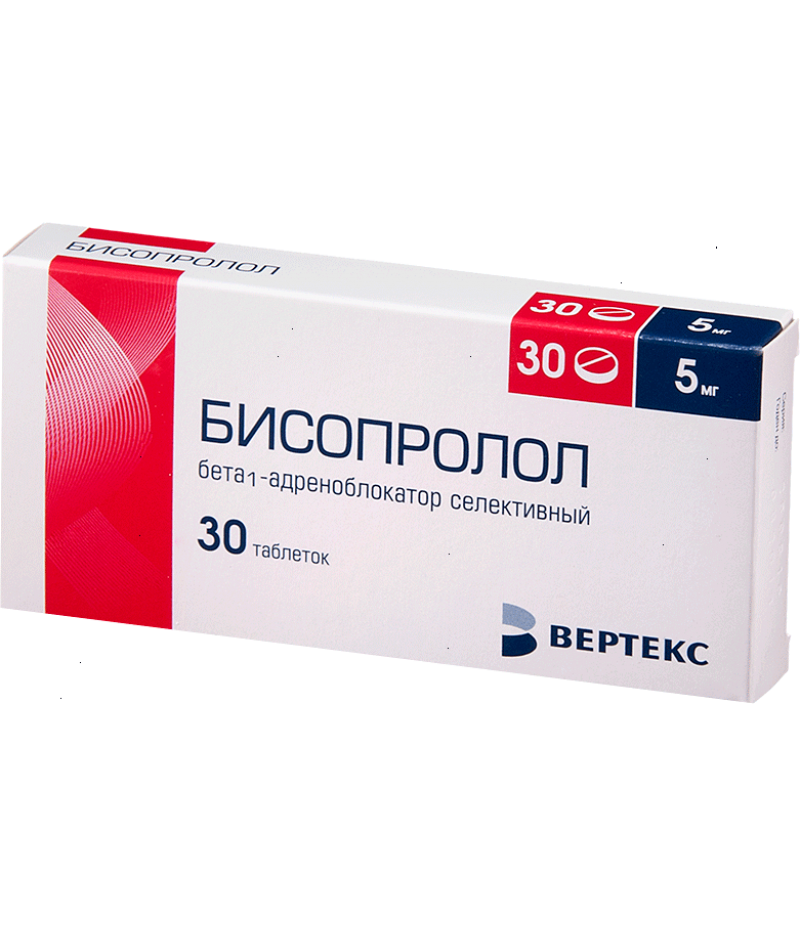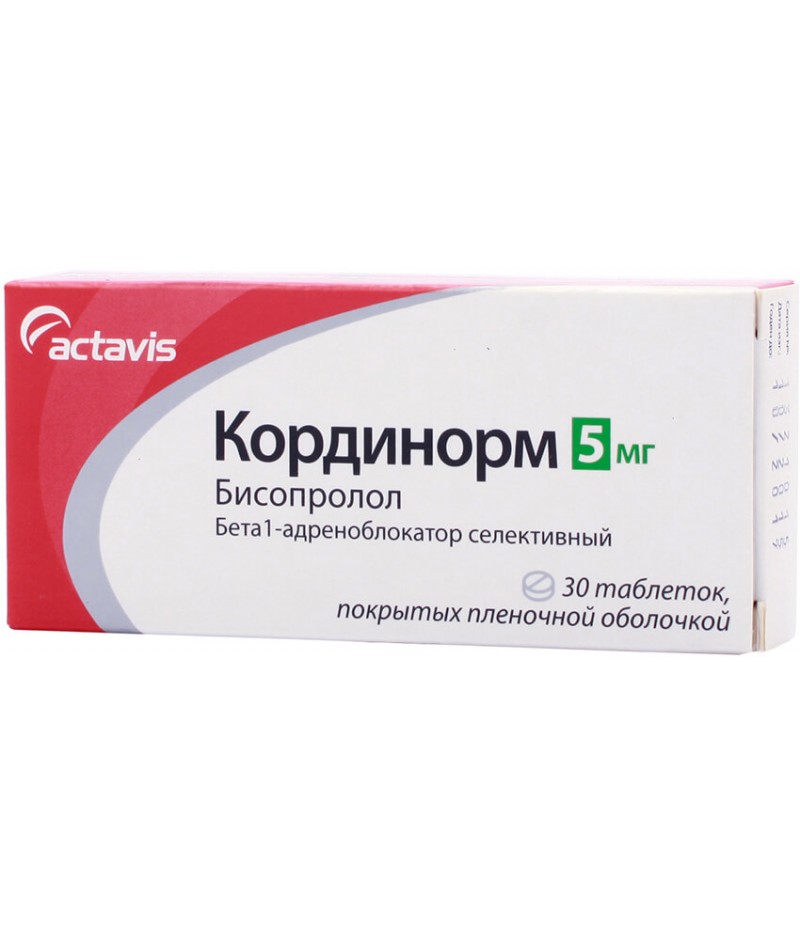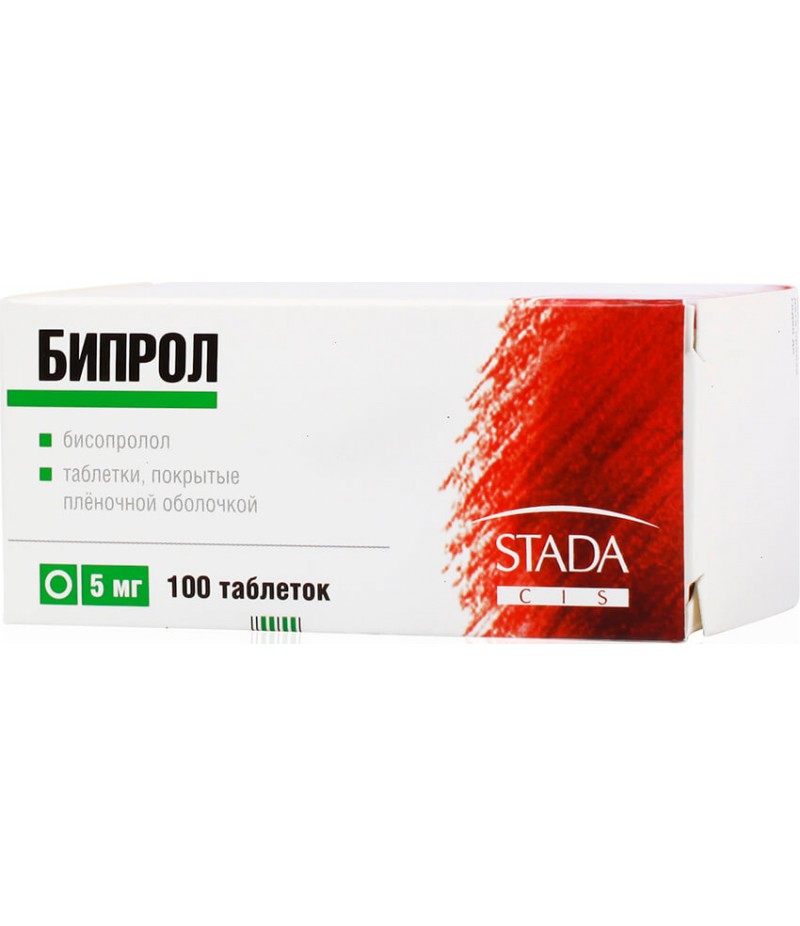Bisogamma tabs 5mg #30
- $6.99
- 3 or more $6.85
- Availability:In Stock
Instruction for BisogammaReed more and buy Bisogamma on this pageCompositionThe active constituents of the tablets are bisoprolol hemifumarate, depending on the dosage it contains 5 mg or 10 mg, the list of excipients differs from..
Tags: tabs
Instruction for Bisogamma
Reed more and buy Bisogamma on this page
Composition
The active constituents of the tablets are bisoprolol hemifumarate, depending on the dosage it contains 5 mg or 10 mg, the list of excipients differs from each other:
Dosage 5 mg: crospovidone, pregelatinized starch, MCC, magnesium stearate, colloidal silicon dioxide, macrogol 6000, titanium dioxide (E171), talc, hypromellose (HPMC), dye - (E172) iron (III) oxide yellow.
Dosage 10 mg: crospovidone, pregelatinized starch, MCC, magnesium stearate, colloidal silicon dioxide, polysorbate 20, macrogol 6000, titanium dioxide (E171), calcium carbonate (E170), hypromellose (HPMC 5, 50) talc, dye - (E172) iron (III) oxide yellow.
Form of issue
Bisogamma - tablets in a film shell, round, on one side of a convex shape with a risk. Depending on the dosage tablets differ in color: 5 mg - color light yellow, 10 mg - yellow-orange.
Packed tablets in blisters for 10 tablets. In a cardboard box there can be 3 or 5 blisters.
pharmachologic effect
The use of Bisogamma gives antiarrhythmic, antihypertensive and antianginal effects.
Pharmacodynamics and pharmacokinetics
By its nature, bisoprolol is a cardioselective β1-adrenoblocker that does not possess sympathomimetic activity or membrane-stabilizing properties.
The action of the drug reduces the activity of plasma renin and reduces the need for cardiomyocytes in oxygen. There is a decrease in heart rate both in patients at rest and during exercise. Acceptance of low doses causes blocking of β1-adrenergic receptors in the heart and reduces stimulation with catecholamines of cAMP synthesis from adenosine triphosphate, while the intracellular current of Ca2 + ions decreases, negative dromo-, batmo-, chrono-, and inotropic effects without delay of Na + ions are observed.
Due to the reciprocal increase in the activity of α-adrenergic receptors and the removal of β-adrenoreceptor stimulation, the total peripheral vascular resistance (OPSS) increases on the first day of therapy. After 1-3 days it returns to the original, and with further treatment - decreases.
The hypotensive effect is caused by a decrease in the minute volume of the blood, sympathetic stimulation of the peripheral vessels, a decrease in the activity of the renin-angiotensin system (RAS), and the ability to restore the sensitivity of the baroreceptors to changes in blood pressure, as well as the effect on the central nervous system. With arterial hypertension, the effect occurs after a lapse of 2-5 days, a stable effect - after 1-2 months.
The antianginal effect is due to a decrease in the need for cardiac muscle in oxygen due to a decrease in heart rate and contractility, diastole lengthening and improvement of cardiac muscle perfusion.
Antiarrhythmic effect is realized by the way of elimination of arrhythmogenic factors, including tachycardia, increased activity of the sympathetic nervous system, increased cAMP content, arterial hypertension. In addition, the drug reduces the rate of sudden excitation of the sinus and ectopic cardiac pacemaker, slows atrioventricular conduction to a greater extent - in the anterograde and, less in the retrograde direction, as well as in additional branches.
Pharmacokinetics
The absorption process takes place 80-90% regardless of meals. Achieving the maximum level of bisoprolol in the blood plasma occurs in 1-3 hours. It binds to blood proteins about 30% of the active substance, which has low permeability through the blood-brain and placental barriers, and is secreted in small doses with breast milk. Almost half of the dose taken is metabolized in the liver to inactive metabolites. Up to 50% of the drug is excreted through the kidneys unchanged. The half-life is from 10 to 0.5 days.
Indications for use
Preparation Bisogamma appoint:
As a preventive agent of angina attacks in ischemic heart disease (CHD).
For the treatment of hypertension.
Contraindications
The drug should not be used in patients
with known hypersensitivity to the components of the drug and other β-adrenoblockers;
in a state of cardiogenic shock or in collapse;
with pulmonary edema, acute or chronic heart failure in decompensation, AV blockade of II-III degree, sinoatrial block, pronounced bradycardia, arterial hypotension;
having syndrome of weakness of the sinus node;
suffering from angina of Prinzmetal, cardiomegaly, proceeding without signs of heart failure;
with bronchial asthma in severe form and with other obstructive airways diseases;
taking monoamine oxidase inhibitors and 2 weeks after their withdrawal (except MAO-B inhibitors);
in the late stage of peripheral circulation disorders or with Raynaud's disease;
with pheochromocytoma without the use of α-adrenoblockers;
with metabolic acidosis;
in a state of depression;
under 18 years of age.
Caution should be used in patients
with hepatic and / or chronic renal insufficiency;
suffering thyrotoxicosis, myasthenia gravis, diabetes mellitus, AV blockade I degree, psoriasis;
having in the anamnesis information about depression, allergic reactions;
in old age.
Side effects
Perhaps the appearance of such unwanted manifestations on the part of individual systems of the human body:
From the side of the central nervous system, the side effect can manifest itself in the form of increased fatigue, weakness, dizziness, migraine, sleep disorders, depression, anxiety, confusion or short-term memory loss, hallucinations, asthenia, myasthenia gravis, tremors, seizures.
On the part of various senses, visual disturbances may occur, the secretion of tear fluid may decrease and tenderness, dry eyes, and even conjunctivitis may develop.
CCC - may develop sinus bradycardia or palpitations, conduction disturbances in the myocardium, AV blockade, weaken myocardial contractility or worsen chronic heart failure, decrease blood pressure or develop orthostatic hypotension, angiospasm, chest pain.
Digestive system - dry mouth, nausea, vomiting, abdominal pain, constipation, diarrhea, functional disorders of the liver, changes in taste.
Respiratory system - unwanted reactions can occur as a nasal congestion, difficulty breathing, laryngo-, bronchospasm.
Endocrine system - with insulin-independent diabetes mellitus hyperglycemia may develop, with insulin use - hypoglycemia, as well as hypothyroid status.
Epidermis - sweating may increase, skin flushing, exanthema, various psoriasis-like reactions, alopecia, psoriasis symptoms may worsen.
In addition, other adverse reactions have been reported: back pain, spasms in the calf muscles, arthralgia, libido decline and potency levels; allergic reactions: skin itching, rash, urticaria.
Therapy can lead to a change in laboratory parameters: thrombocytopenia, agranulocytosis, leukopenia, increased ALT, AST and the activity of other liver enzymes, triglyceride levels, bilirubin.
Withdrawal syndrome
It manifests itself in the form of increased attacks of angina and an increase in blood pressure.
Bisogamma, instructions for use (Method and dosage)
Take Bisogamma tablets should be inside in the morning, on an empty stomach, without chewing. The standard daily dose is 5 mg, if necessary, patients with impaired renal function can be increased to 10 mg, the rest up to 20 mg.
Overdose
Clinical picture
Develops ventricular extrasystole, bradycardia, AV blockade, chronic heart failure, low blood pressure, cyanosis of the fingernails or palms, shortness of breath, bronchospasm, fainting and dizziness, convulsions.
Measures taken to treat
Immediately flush the stomach, apply adsorptive drugs and the principles of symptomatic therapy:
if the AV blockade develops, then I / in 1-2 mg Epinephrine, Atropine, or install a temporary pacemaker;
ventricular extrasystole - appoint lidocaine (preparations of I A of the class are not applied);
reduced blood pressure - place the patient in the Trendelenburg position;
if there is no pulmonary edema - you must inject IV plasma solution, in the absence of the necessary effect, go to the introduction of Epinephrine, Dobutamine, Dopamine;
heart failure - use cardiac glycosides, glucagon, diuretics;
convulsions - enter IV diazepam;
bronchospasm - use in the form of inhalation β2-adrenostimulants.
Interaction
Simultaneous reception of this drug with sulfasalazine leads to an increase in the plasma bisoprolol concentration, whereas with Rifampicin, the half-life of the drug decreases.
With allergens used for immunotherapy, or allergen extracts for carrying out skin tests, the risk of developing severe systemic reactions from the immune system, up to anaphylaxis, is increased.
With iodine-containing radiocontrast drugs (with iv introduction), the risk of developing a different severity of anaphylactic reactions increases.
With phenytoin (IV), inhalation agents for general anesthesia (especially hydrocarbon derivatives) increase cardiovascular depressive effect and decrease blood pressure.
With the NSAID, the hypotensive effect of Bisogamma is weakened.
With cardiac glycosides, methyldopa, reserpine, Guangfacin, BCC (Verapamil, Diltiazem), Amiodarone and other antiarrhythmic drugs, the risk of either aggravation of bradycardia, and heart failure, atrioventricular blockade, is possible - cardiac arrest.
With Nifedipin - a significant reduction in blood pressure, with diuretics, clonidine, sympatholytic drugs, hydralazine and other hypotensive drugs - an excessive decrease in blood pressure.
With non-depolarizing muscle relaxants, the effect of the latter is prolonged, with coumarins - their anticoagulant effect.
With tetra-, tricyclic antidepressants, antipsychotic drugs (neuroleptics), ethanol, sedative and hypnotic drugs, CNS depression is increasing.
With unhydrogenated ergot alkaloids, the risk of peripheral circulation is increased.
Terms of sale
You don't need a prescription to buy Bisogamma from our store.
Storage conditions
The drug should be stored in a place inaccessible to children.
Temperature values should not exceed +25 ° Celsius.
Shelf life
The drug can be used for 3 years from the date on the packaging specified by the manufacturer.
In pregnancy and lactation
Bisogamma can be used only in the case of potentially greater benefit to the mother than the presumptive risk to the fetus or child, which can be expressed in such side effects (in the fetus) as: bradycardia, intrauterine growth retardation, development of hypoglycemia.
Reviews about Bisogamma
Patients who took Bisogamma tablets claim that the drug justifies itself, its price is filled with its effectiveness and effectiveness. The only thing that worries many is a large list of side effects that occur often enough and create discomfort.




